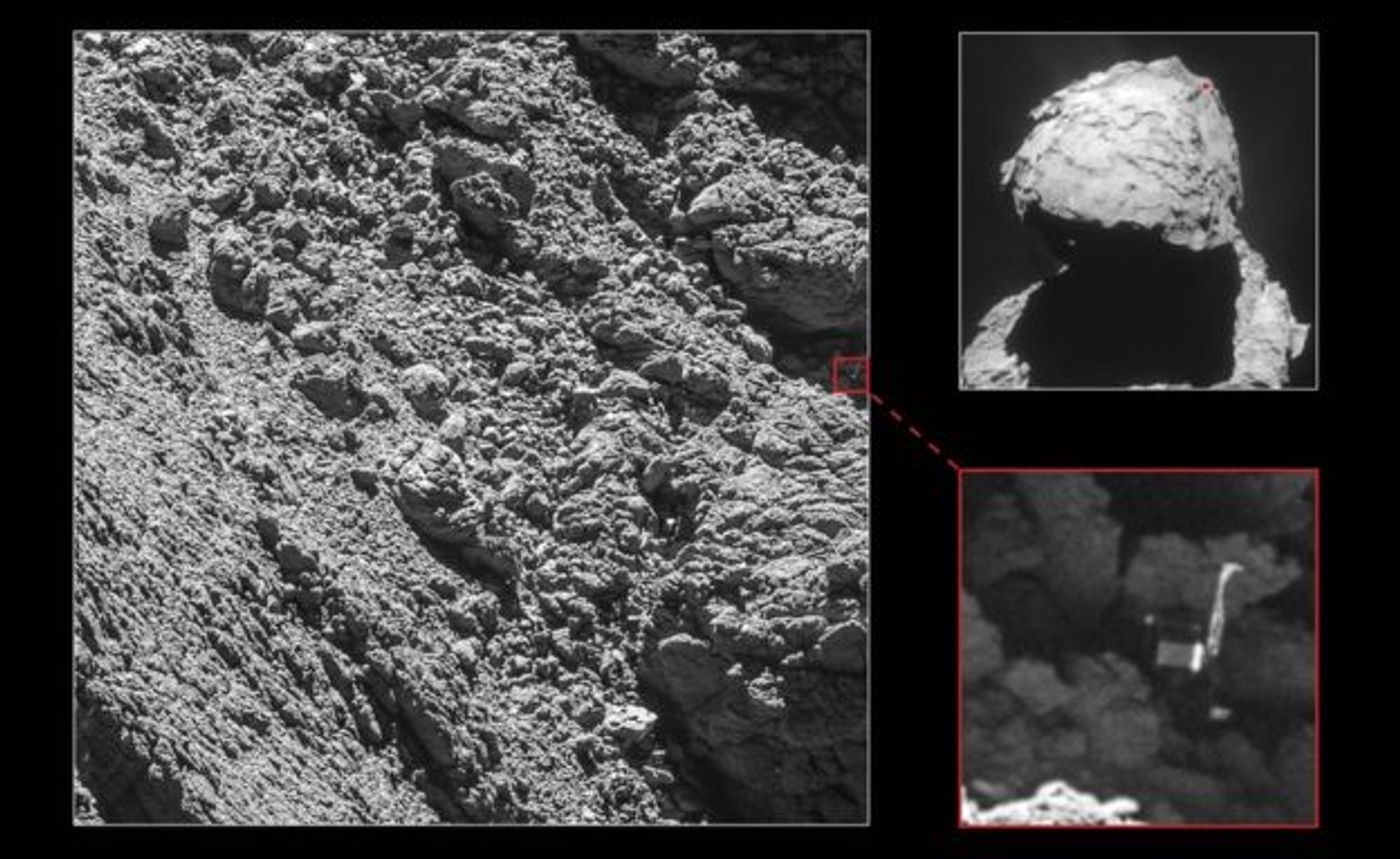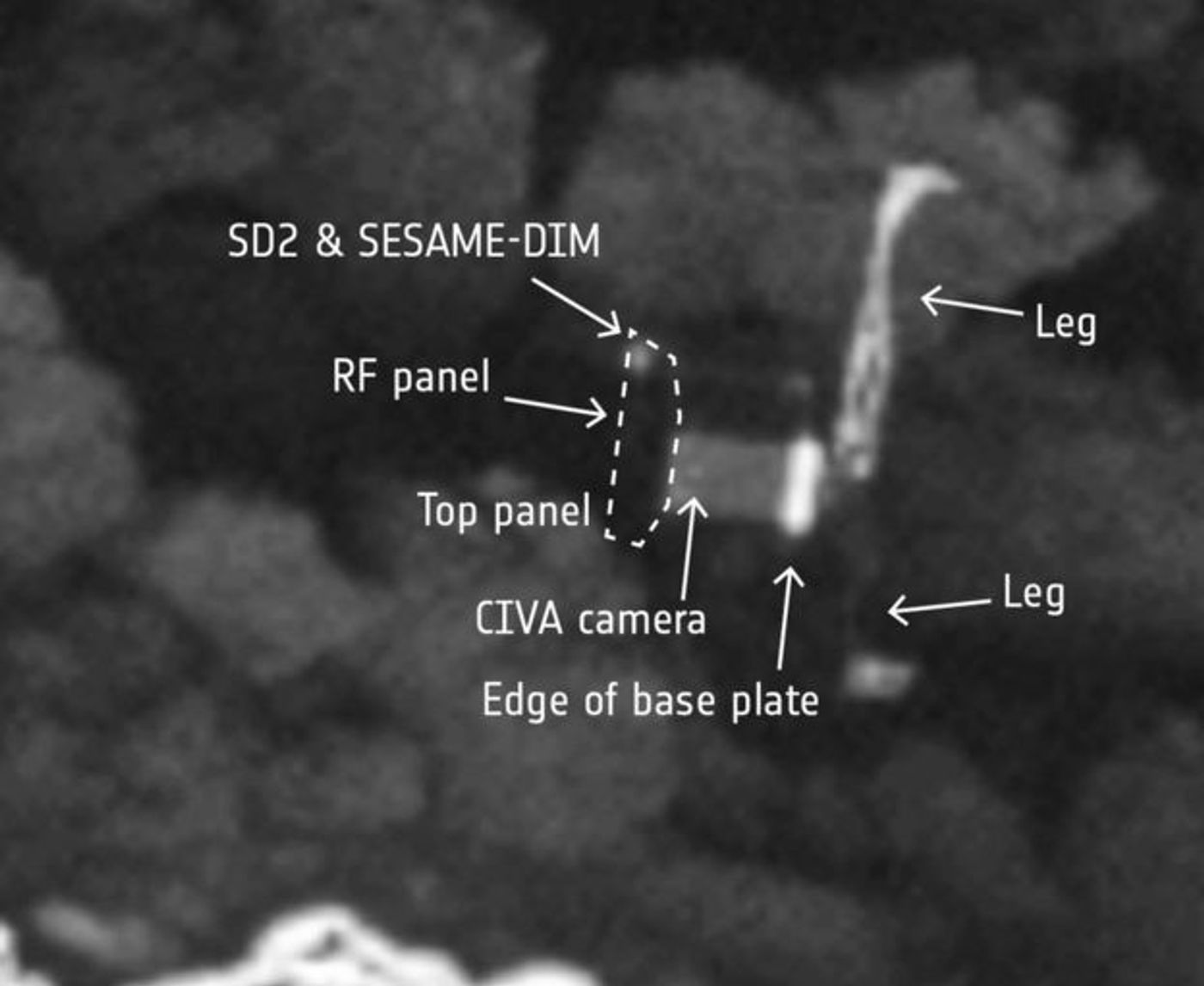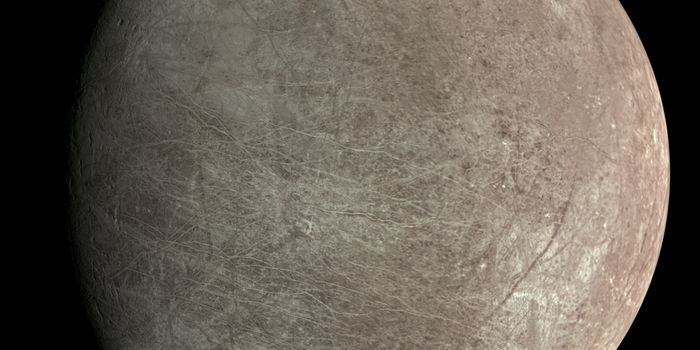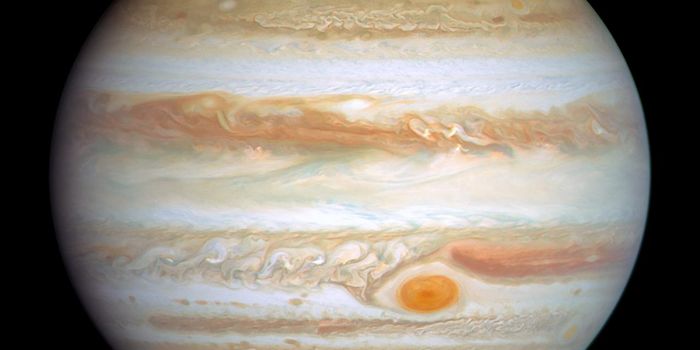Rosetta Snaps Clear Photo of Philae Lander Stuck in a Ditch on Comet 67P
New images from Rosetta's Osiris instrument show Philae in vividly-clear detail on comet 67P's surface. Astronomers say the new photographs could help us learn more about the photographs Philae took during its operation, as we now know exactly where it is and how it was oriented.

Image Credit: ESA/Rosetta/MPS for OSIRIS Team/NavCam
The European Space Agency’s Philae comet lander made history in 2014 when it landed on comet 67P. It was the first man-made object to ever land on a comet for study, and although there were a lot of high hopes for Philae, the landing unfortunately didn’t quite go as planned.
Philae ended up landing in a dark ditch where the Sun was unable to power the lander’s solar array. As a result, Philae is unable to collect the power it needs to operate at its full expectations and has been ignoring communication attempts since. Moreover, the landing was a little bumpier than expected, so it’s thought to have taken some damage as well.
Despite the fact Philae essentially crash-landed in the wrong spot on 67P, the ESA worked hard to keep trying to communicate with it, and simply had no good luck. They decided that they were going to crash its mother ship, Rosetta, into 67P and give up on the mission altogether.
Of course, now and out of the blue, the ESA has some exciting news regarding Philae. Just weeks before the Rosetta suicide mission was expected to go down, Rosetta has managed to snap a photograph of Philae’s exact location on the comet with its Osiris instrument.
The photograph below shows Philae stranded in a dark ditch on 67P, just out of the Sun’s reach. The ESA says that the photographs are ‘as clear as day,’ so there’s no refuting that what we see here is indeed the Philae lander.

Image Credit: ESA/Rosetta/MPS for OSIRIS Team
"With only a month left of the Rosetta mission, we are so happy to have finally imaged Philae, and to see it in such amazing detail," Cecilia Tubiana of the ESA’s Osiris team said.
What’s more is now that we know Philae’s exact location on 67P, the ESA can put into perspective some of the photographs Philae took just after its landing before going dormant. Because we had no idea where Philae landed (because remember, it was somewhere in a dark ditch), the ESA never really knew what they were looking at.
"This wonderful news means that we now have the missing 'ground-truth' information needed to put Philae's three days of science into proper context, now that we know where that ground actually is!" said Rosetta project scientist Matt Taylor.
The suicide mission for Rosetta isn’t going to be cancelled all because of an exciting photograph, unfortunately. The mission is still a complete bust due to the fact that Philae hasn’t been heard from since mid-2015. The ESA officially killed contact with the Philae lander back in July.
This gem of a photograph will simply allow the ESA to start connecting the dots, and that’s a valuable discovery.
Source: ESA via BBC








